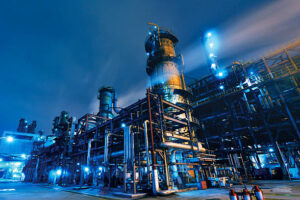
The Future of Anti-Slip Flooring: Innovations to Watch in 2025 and Beyond
The Future of Anti-Slip Flooring: Innovations in 2025 and Beyond Workplace safety is evolving, and anti-slip flooring technology is at the forefront
Climate change is increasing the frequency and severity of extreme weather events, posing new risks to workplace safety. From excessive heat and heavy rainfall to icy conditions and hurricanes, businesses must adapt to protect employees, maintain operations, and comply with evolving safety regulations.
In this blog, we explore the impact of climate change on workplace safety and provide actionable strategies for preparing work environments to handle these challenges.
As global temperatures rise, heatwaves are becoming more frequent and intense. Outdoor workers, factory employees, and those in non-air-conditioned environments face an increased risk of heat exhaustion and heat stroke.
OSHA estimates that thousands of workers suffer from heat-related illnesses each year, with some cases being fatal. (OSHA)
Heavy rain and flooding lead to wet floors, water-damaged walkways, and an increased risk of slips and falls. In outdoor work settings, excessive rain can weaken structures, cause sinkholes, and create hazardous conditions for employees.
Slips, trips, and falls are among the leading causes of workplace injuries, and wet conditions significantly increase the risk. (CDC)
Regions experiencing harsh winters are seeing more frequent and unpredictable snow and ice storms, leading to:
-Slippery walkways and staircases
-Frostbite and hypothermia risks for outdoor workers
-Machinery malfunctions due to extreme cold
Cold stress can be just as dangerous as heat stress, affecting circulation, dexterity, and overall safety. (NIOSH)
Severe storms, hurricanes, and tornadoes pose a major risk to workplace structures and employee safety. Businesses that do not prepare adequately can face damaged property, lost productivity, and injuries.
Strong winds and flying debris are responsible for thousands of workplace injuries each year. (FEMA)
Heat Safety & Prevention Measures
✔ Implement Cooling Stations – Provide shaded areas, hydration stations, and rest periods for outdoor workers.
✔ Adjust Work Schedules – Schedule strenuous activities during cooler hours (morning or evening).
✔ Educate Employees on Heat Stress – Train staff to recognize symptoms of heat exhaustion and heat stroke.
✔ Install Heat-Resistant Flooring – Heat-resistant and non-slip flooring helps prevent burn-related injuries.
Preventing Slips & Falls in Rainy Conditions
✔ Use Anti-Slip Mats & Coatings – Install high-traction flooring in wet areas.
✔ Improve Drainage Systems – Ensure rainwater does not accumulate in walkways.
✔ Implement a Wet Floor Safety Policy – Mandate immediate cleanup of spills and wet surfaces.
💡Titan Safety’s anti-slip grating solutions are designed to prevent slips in wet and rainy conditions, making workplaces safer. SHOP HERE
Winter Safety & Icy Conditions
✔ Apply Anti-Slip Treads & Grit Coatings – Use stair safety strips and ice-resistant floor coatings.
✔ Provide Cold-Weather Gear – Ensure employees wear insulated gloves, boots, and thermal clothing.
✔ Develop a Snow & Ice Removal Plan – Use salt, sand, and plows to keep outdoor areas safe.
💡 Titan Safety’s stair treads and anti-slip floor coatings provide increased traction in snowy and icy environments. SHOP HERE
Storm & High-Wind Safety
✔ Secure Loose Objects – Anchor tools, signs, and materials that could become airborne.
✔ Conduct Regular Structural Inspections – Ensure buildings and work areas can withstand extreme weather.
✔ Establish an Emergency Action Plan – Train employees on evacuation and sheltering procedures.
At Titan Safety, we provide industry-leading anti-slip solutions that help workplaces stay safe in all weather conditions. Whether it’s rain, snow, or extreme heat, our products help reduce slip hazards, improve traction, and create a safer work environment.
Explore our range of weather-resistant anti-slip solutions here.
Extreme weather events are becoming more common, making climate resilience a critical part of workplace safety. By implementing preventative measures, training employees, and investing in the right safety solutions, businesses can protect their workforce and maintain productivity—no matter what the weather brings. Read More
Want expert recommendations on how to improve workplace safety? Contact Titan Safety today!

The Future of Anti-Slip Flooring: Innovations in 2025 and Beyond Workplace safety is evolving, and anti-slip flooring technology is at the forefront

The Impact of Climate Change on Workplace Safety Climate change is increasing the frequency and severity of extreme weather events,

Sustainable Anti-Slip Solutions Workplace safety is a top priority for businesses, and anti-slip solutions play a crucial role in preventing